 What a pleasure it was to listen as the students shared their descriptions of their ideal friend in class on Monday! They were wonderful. I look forward to hearing about their favorite African animals next week. We talked about how to write a paragraph in class, and for homework I have invited them to write a paragraph about their favorite African animals. For our map of Africa, we all contributed to a large map on the chalkboard, including important physical features as well as natural resources. Look closely at the picture, and you will see a legend to the left to help you decode the map. We discovered that Africa has many important natural resources. Students made their own maps of Africa, too. The stories are a highlight every week! This week, we began with a traditional tale about how monkeys developed their long arms and skinny bellies. Ask your children to tell you the story. It is a funny one! We read another chapter of Gilgamesh the Hero, as well. This week, he and Enkidu defeated Huwawa, the guardian of the forest. Comfort is of utmost importance during the story! If your child wants to stretch out on the floor, they may want to bring a pillow. I will be making a couch calendar in class this week to get us through the rest of the semester. Looking Ahead... During our final class, the children will all be making presentations on a subject of their choosing, related to our studies. They may want to to tell a traditional folktale, make up one of their own, or teach a short lesson on a geographical topic that has grabbed their attention. We are talking about this in class, and I will be encouraging them to soon make a choice. Next week, we will be studying Egypt, and reading from Egyptian Myths. Spacecraft Landings!
Seeing how we weren’t at NASA, the students then designed ships using items brought in from home. The rule is that they have to land on our bowl of Oobleck for 5 seconds without getting stuck. Some students worked in teams, while others preferred to work on their own. They were so involved in this task that they will need to finish their ships at the beginning of class next week, when they will finally be able to see if their creation will pass the test.
Creative Astronomy! Our budding astronomers really rose to the challenge this week and designed some very creative and successful astronomical monuments! Bravo to all of you - I was really impressed with the effectiveness and the diversity in your designs.
Next Week... In preparation for our next class, students should read chapters 6-8 in the textbook and complete pages 20 and 21 in the Student Quest Guide. We will continue our discussion on the emerging ideas of the earliest scientists/philosophers from Ionia and begin to look at how mathematics became an invaluable tool in the advancement of scientific thought.
Medea on Trial
 Gilgamesh and Enkidu Gilgamesh and Enkidu This week we began our reading of Gilgamesh The Hero, a retelling of The Epic of Gilgamesh for children. It is beautifully written, and I highly recommend reading it as a family if you can find a copy. The oldest recorded story, it makes a perfect beginning point for our class as we begin our exploration of place and story. To introduce it, we started by mapping ancient Mesopotamia, where the story takes place. You can find the maps we used here: Maps, both blank, and completed. If your child did not yet finish their map work, they can use the online map to help them. After reading the first three sections of Gilgamesh, we took some time to think about the way the two main characters are described. Gilgamesh and Enkidu are described in very vivid terms, both in terms of their physical appearance and their personalities. One is a king, his restlessness making him a burden to his people. The other is created by a goddess out of clay to be his friend. One wears a gold belt and lapis lazuli collar. The other has a clay brain and matted hair. For this week's homework, the students are invited to write a description of their own ideal friend. If a perfect friend was created just for them, what kind of person would they be? Please encourage them to use descriptive language to bring this friend to life. This upcoming week, we will be learning about the geography of Africa, and the island of Madagascar. We will read from Nelson Mandela's Favorite African Folktales, and continue with Gilgamesh. Ancient Calendars  Lunar or Solar-based calendar; which is best? Lunar or Solar-based calendar; which is best? In class this week we compared calendars that were established and used by the ancient societies of Babylon, China, Islam and Egypt. Students worked in small groups to discuss and summarize the advantages and disadvantages of these calendars (using Student Quest Sheet from Chapter 3). For ancient civilizations, the challenge of explaining the precise and repeating events in the sky played a key role in understanding the world around them. Their ability to hunt, farm and survive was dependent upon accurately marking the seasons and cycles of the year. Their careful observations provided the inspiration for the first thoughts about science, and the development of scientific thinking in general. Astronomical Monuments We also looked at examples of how ancient sun observers made use of natural geological structures and arranged stones, markers, and buildings to mark solar alignments that they observed at different times of the year, particularly around solstices and equinoxes. Beams of sunlight and shadow would make patterns, or illuminate special locations on important calendar days. Several of these ancient sites are shown below: In class next week students will be challenged to create their own astronomical monument out of clay. These small scale monuments must be designed to create specific patterns or alignments at designated times of the year. Using a specially prepared “Horizon Table”, students will place their solar observatory structure at the center and test it with a portable lamp that represents the Sun and can be positioned to simulate the Sun’s point on the horizon at sunrise or sunset on an equinox or solstice.
I have asked students to spend some time researching ancient astronomical monuments this week to formulate some ideas for their own designs. Come prepared to build and be creative! Additionally, students should read Chapter 5 in the text as homework. See you on Monday! The Laws of Oobleck Our scientific convention took place this morning in order to share each group’s discoveries from last week and come to a consensus on the “Laws of Oobleck”. A law is defined as a descriptive generalization about how some aspect of the natural world behaves under stated circumstances. I was interested to see how long they would stay involved in this type of discussion because of the differing ages and attention spans. Boy, was I surprised! As each group shared an observation from last week we tested and refined statements to reflect the properties of Oobleck accurately. Students discovered that being specific mattered. They also saw how disagreement wasn’t bad, but helpful in this type of process as it helped narrow our descriptions. The students stayed involved in this for about 45 minutes! I was so impressed that they stuck with it! Testing our statements using the Oobleck, while defining each law, helped keep interest going. Here’s the list we created...
Spacecraft Design The students then moved into the next phase of our analysis, which is to design a spacecraft that is able to land on an ocean of Oobleck without sinking, explore the moon, and take off again without getting stuck, with all passengers safely aboard. They began their initial designs on paper. We will begin next week with completing the designs and sharing them. Once their spacecrafts satisfy the requirements and account for the Laws of Oobleck they will make a model using many items they discussed at the end of class. Please remind them to bring in some of the items they mentioned. Here are some we came up with:
If you have any of these items, or anything else your child comes up with, can you please let me know via e-mail? ([email protected]) That way I’ll know what supplies I should bring in next week.
I’ve been so impressed by the observations and scientific thinking the students have shared in class. I’m looking forward to seeing what they come up with next week! “The most exciting phrase in science, the one that heralds new discoveries, is not ‘Eureka’ (I found it!) but ‘That’s funny…’” - Isaac Asimov, author  Yesterday's class began with a personal myth share -- the homework assignment from last week. Because we have so much to cover, and only 90 minutes to fit it all in, we heard from half the class yesterday and will have the other half read their myths on Monday. For those that still need time to complete their stories...reprieve! Susan then led the class in a series of very fun and helpful diction and inflection exercises. Students were given a "Tongue Twister" handout and another on Greek name pronunciations. It would be great if students could review these at home, as well. Our first read through of The Golden Fleece: Part II took most of the remaining class time. Lengthier, and more action-packed than Part I, I think the students were generally surprised at the ending and enjoyed getting into the story line. We briefly discussed some of the elements of the myth and quickly realized that we need more time to be able to dig deeply into some of the concepts that arise out of these ancient stories. We will be spending two more weeks on Part I and Part II -- re-reading the scripts and spending lots of time on analysis, discussion, and the un-folding of our next homework assignment. "Ladies and Gentlemen of the Jury..." On that note, for next week, students were tasked with the following: Imagine Medea is put on trial for the murder of her two children, the Princess Glauce, and King Creon. Write a case for the prosecution or defense. We divided the class in half -- five will write a defense argument and five will write a case for the prosecution of Medea. Students should keep in mind this a creative writing exercise and it is perfectly acceptable to fabricate witnesses and evidence to support their cases. They should, however, refer to the script for basic details, as well as the handout provided to help guide them in constructing their arguments. On Monday, at least two students will "face off" -- one defense vs. one prosecution, in our own version of a mock trial! If we do not have time for everyone on Monday, rest assured, all will be asked to present a case before we conclude our study of Jason on March 4. On March 11, we will move on to The Odyssey. Lastly, Susan would like to add the following thoughts...first, is the growth and courage the kids brought with them to class this week. They were expressive and brought out their characters more. And they held a space when their classmates stepped out of their comfort zones. Please make sure students highlight their Act II parts and look back over both scripts and read the "acting note" prior to their line, (e.g., sarcastically or angrily or dryly), so they can deliver the line with that inflection. All around there was a real creative flow happening and it's wonderful to be a part of it! At the end of class, Susan also instructed the children in stage direction and some physical exercises to help them feel comfortable in their own skin. Great job everyone! See you next week! 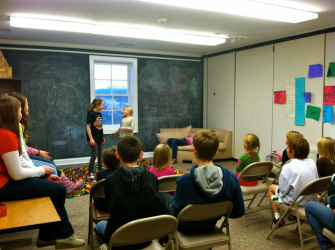 Since most of our students stay for free club time from 1:45 - 2:30pm, we'd like to give you a quick up-date on where our spring clubs stand, and also ask for your assistance in some areas! For our first club meeting last week, the Drama Club wrapped up its Fall 2012 agenda by performing two plays for the entire student body. The plays were designed and produced by the students and based on well-known fairy tales. Yesterday, we gave the students three choices for the spring term (creative writing, strategy games, and handwork) and they seem to have settled on a combination of strategy games, with a few students taking time out of games to do handwork (knitting, beading, etc.)  For Strategy Games we have a schedule for the first seven weeks: Weeks 1 & 2: Chess Tournament Week 3: Blokus Week 4: Checkers Week 5: Qwirkle Week 6: Mastermind Week 7: Loaded Questions Since we have 12 students participating in this club, we need help with making sure we have enough games on hand. For chess, we will need to have six sets. Students volunteered yesterday to bring them, so this is your reminder -- please don't forget, so we can make sure everyone can play on Monday. It probably wouldn't hurt to have an extra. Thank you! Please take a look at the list and email me directly if you can help with bringing some of these games. I will create a schedule and email it to everyone so you know when your turn is coming up. Please make sure your games are marked clearly with your family name. We'll make sure they get returned to you in good order! Additionally, any suggestions for strategy games for weeks 8-13 would be greatly appreciated. Games for at least four players are preferred. Lastly, a few of our students would like to participate in a handwork club led by Mrs. Zeiner. This will be primarily knitting, but could include anything like beading or making friendship bracelets. If you could check with your students to see if they are interested in this club, and provide them with a few basic materials, we can get them started on their project of choice next week. Thank you for your help in making the clubs a success. We want this to be a fun, but productive time for your kids!  I hope your children enjoyed our first class as much as I did. It is a wonderful group of children, and I look forward to getting to know them all better. At our introductory class on Monday, we touched on story telling by telling a continuing story using Rory's Story Cubes. If you have never used these at home, I highly recommend them. It is surprisingly difficult to tell a story from the cubes. My children are much better at it than I am! The students each made a cube of their own. Please ask them to bring these back next week so that we can use them together in class. I have attached the template so that you can make more cubes at home if you would like. We also read the title story in Ted Hughes's How the Whale Became. We began to learn basic facts about the earth, continents, and the globe using a variety of atlases as references. The students will work on developing their research skills each week, using reference books. We talked about Pangaea, and Plate Tectonics. These websites offer some simple activities if you are interested in following up at home. Homework each week is optional. It will deepen their understanding of the material we cover in class, but is not meant as a burden. The children will not be reprimanded in class if they do not do the homework. This week's homework is quite simple. They have a sheet of questions regarding their own interests and preferences. It will help me to get to know them better, as well as to assess their interests and writing skills. I also sent home a sheet of information about Babylon, to give them some background before we begin reading The Epic of Gilgamesh. You can also watch an animated version of the Babylonian creation myth at The Big Myth. If you have an atlas with information about Ancient Mesopotamia, please have your student bring it to class.
|
Categories
All
Archives
May 2016
|
|||||||||||||||||||||






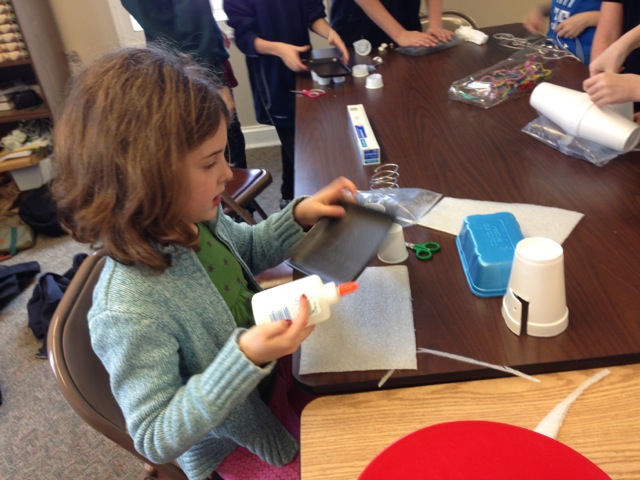


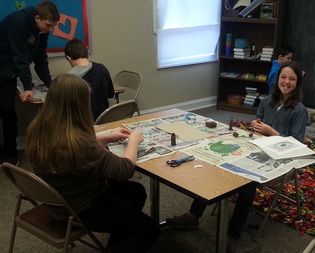

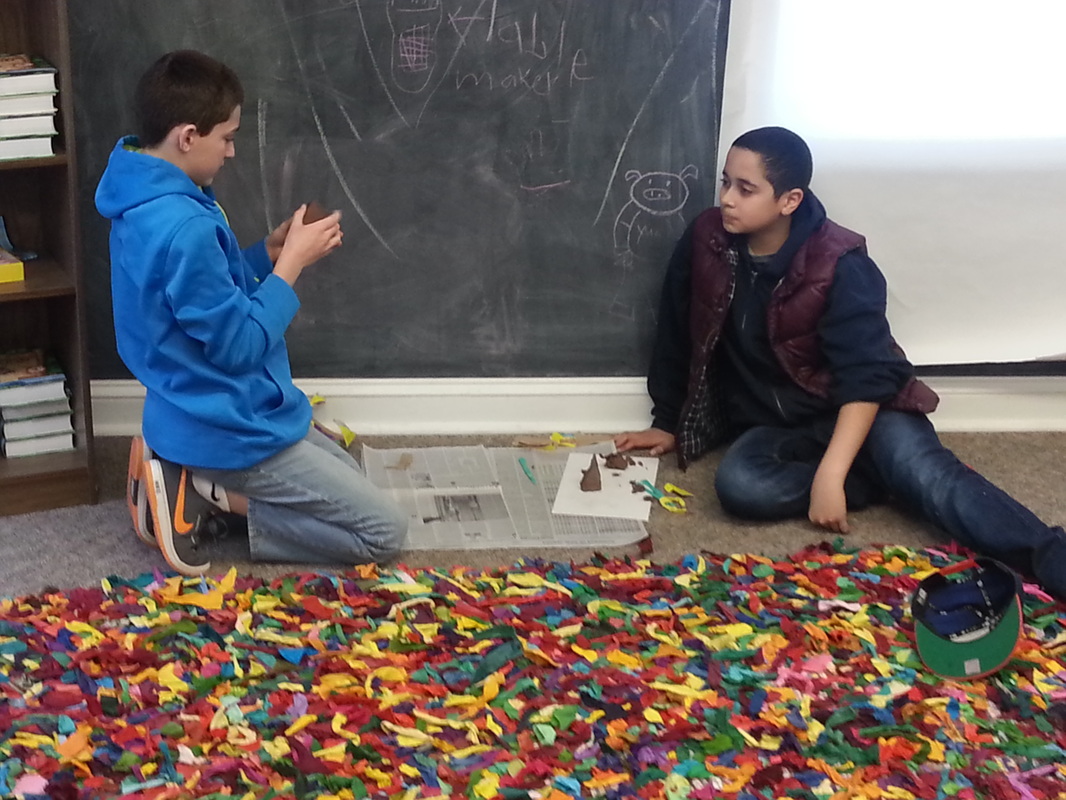






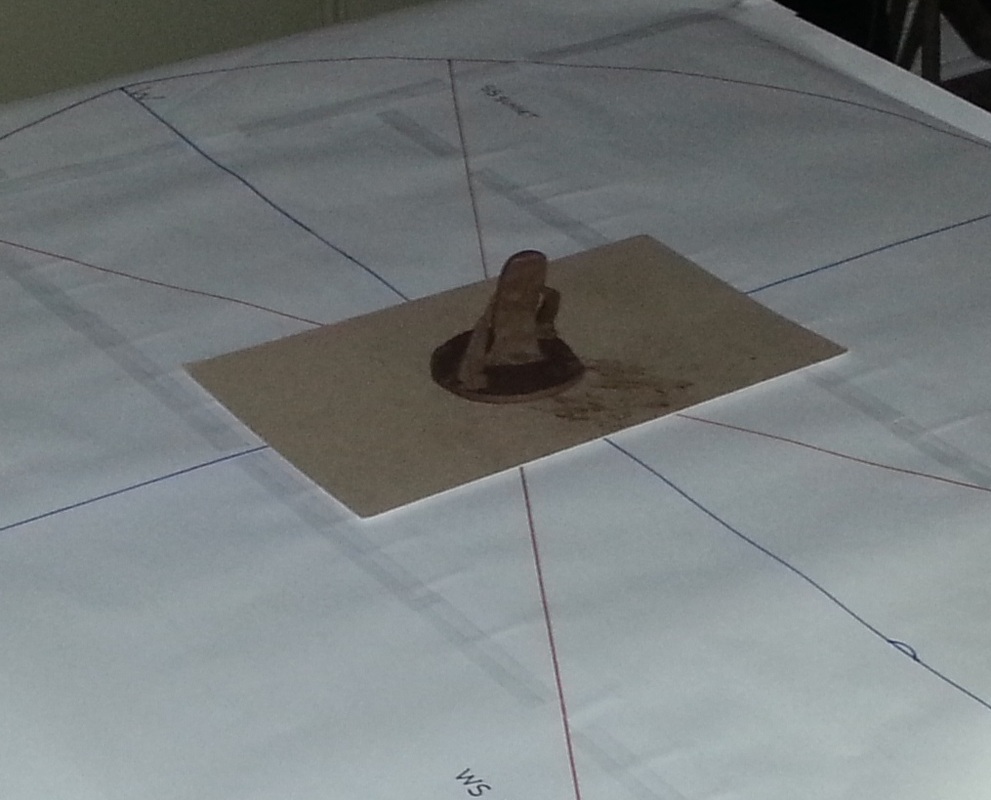
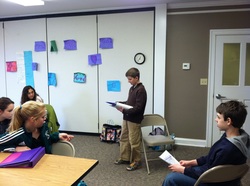



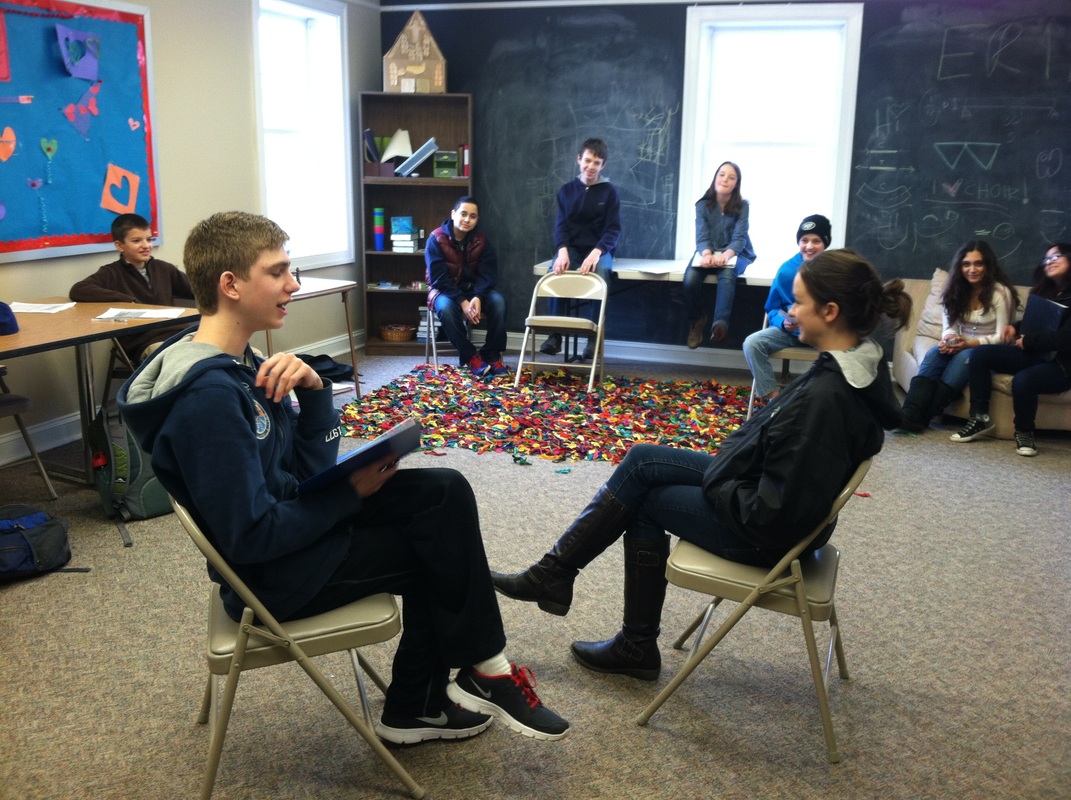

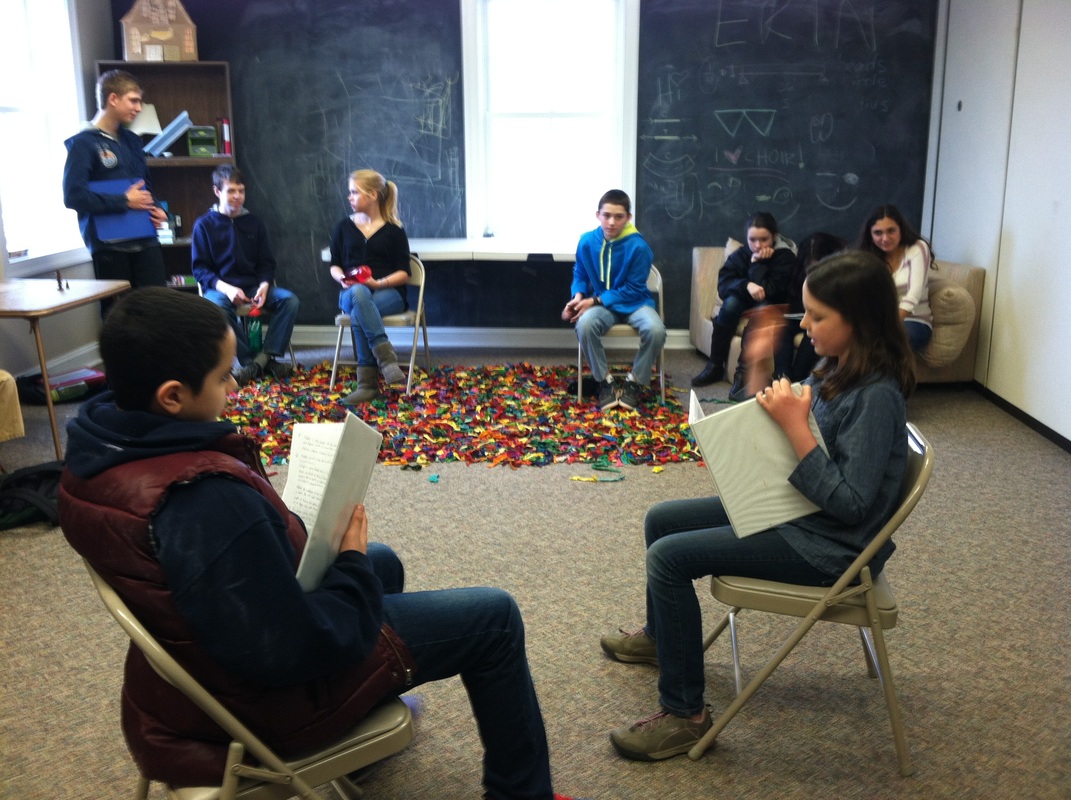






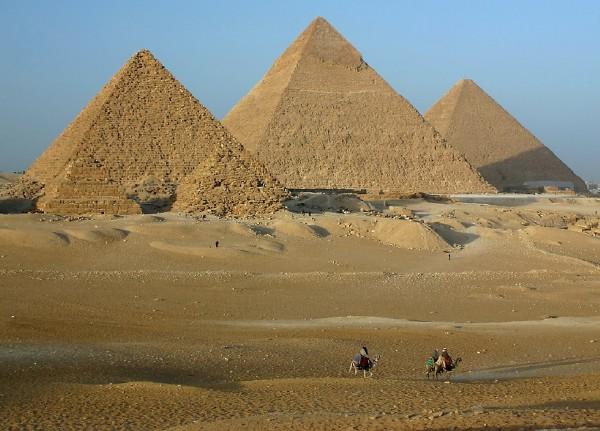
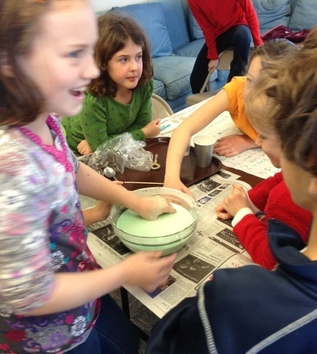






 RSS Feed
RSS Feed